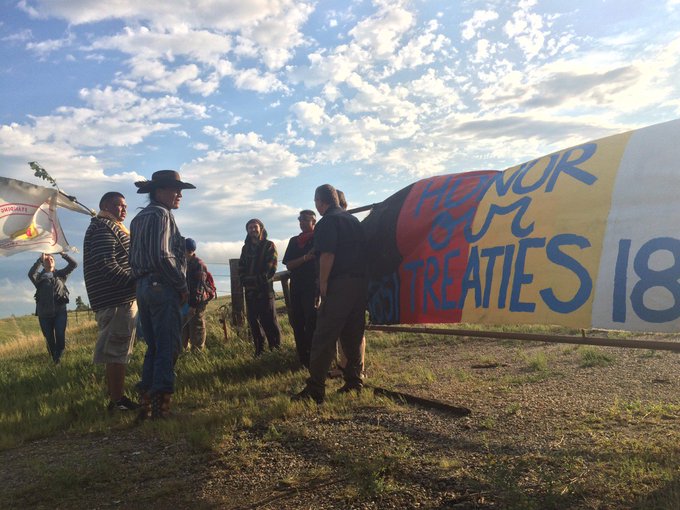Why The Bakken May Not Come Back
OilPrice.com, by Nick Cunningham, Jul 07, 2020
The Bakken shale is already declining because of financial struggles and the oil market downturn, but the potential shuttering of the Dakota Access pipeline could close off the possibility of a rebound.
The 570,000-barrel-per-day oil pipeline carries Bakken oil to the Midwest. On Monday, a federal judge ordered the pipeline to shut down within 30 days after vacating authorization for the project. Energy Transfer immediately appealed for a “provisional stay,” but on Tuesday, U.S. District Court Judge James Boasberg shot down that request.
Energy Transfer will still file a conventional appeal to stay the judge’s order, and surely the company will follow through on that as quick as possible. But it’s not clear how quickly the judge will respond to that; meanwhile he ordered Dakota Access to be drained by August 5.
Even if a stay is granted, the pause could be “short-lived,” ClearView Energy Partners wrote in a note to clients. The firm cited a separate case involving an electric transmission line that resulted in the Army Corps of Engineers being forced to undertake an environmental impact statement after the project was completed.
“Put another way, even conservative jurists can back a court ruling that finds agency environmental reviews flawed and should be suspended while redone,” ClearView Energy Partners wrote. “[T]he horizon for Dakota Access may be darkening,” the firm added.
Assuming that Dakota Access goes offline and undergoes an environmental assessment, which could take the better part of a year, the process will drag on into a potential Joe Biden administration. At that point, the Army Corps, under a new direction, may change its stance, killing off the pipeline.
Time will tell, but in the interim, the temporary closure is an enormous victory for the Standing Rock Sioux Tribe. “This pipeline should have never been built here. We told them that from the beginning,” the Tribe’s Chairperson Mike Faith said.Related: China Inks Military Deal With Iran Under Secretive 25-Year Plan
If Dakota Access is forced to shut down for good, it could head off any hopes on the part of the oil industry to revive production in the Bakken. Without the pipeline, a large portion of Bakken production would need to return to the practice of moving large volumes by rail.
“I think everybody is forming their game plan now, and if they have tank cars, they’re probably thanking their lucky stars,” one source familiar with Bakken rail operations told Reuters.
However, a sudden rush of shipping oil-by-rail will increase the risk of derailments and explosions. Early on in the Bakken shale boom, it was all too common for oil trains to derail and explode, earning them the nickname of “bomb trains.” A return of oil train shipments would increase safety risks.
Meanwhile, because putting oil on rail is more costly, Bakken crude would need to be discounted for the process to make sense.
Already, the region is seeing a larger discount. Shortly after the court decision ordering Dakota Access to shut down, the price of Bakken oil at the hub of Clearbrook, Minnesota declined. Relative to WTI, the discount widened from $1.15 per barrel to $2.75 per barrel, according to Bloomberg, which was the largest markdown since May.Related: The Death Of The $2 Trillion Auto Industry Will Come Sooner Than Expected
The Bakken was already slowing down before the pandemic. Years of red ink from shale drillers soured investors on the whole fracking enterprise, but that is particularly true in the Bakken. For example, Continental Resources, which has a prominent presence in the Bakken, saw its stock price fall in half between late 2018 and late 2019.
Bakken production hit a peak in October and November of last year at just over 1.5 million barrels per day (mb/d), before declining to 1.43 mb/d in February, just before the global pandemic rocked the market.
Because the North Dakota region has much less storage capacity than Texas and Oklahoma, Bakken drillers were immediately squeezed when the market went into a tailspin, forcing them to shut in thousands of wells. The EIA expects production from the Bakken to dip below 1 mb/d in July.
A source at one unnamed Bakken oil producer said that the region’s total production will need to decline to 950,000 bpd in August if Dakota Access shuts down. At the start of this week, Continental’s share price is off by more than 15 percent, a reflection of the negative impact of the DAPL shutdown.
“Production of crude oil is going to be landlocked in North Dakota,” Sandy Fielden, director of oil and products research at Morningstar, told Reuters. “It’s going to be congested and that’s going to cause discounts in the price of Bakken crude to WTI.”
More Top Reads From Oilprice.com:






You must be logged in to post a comment.